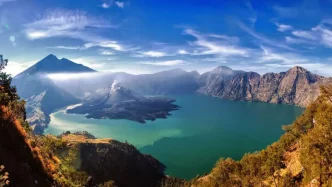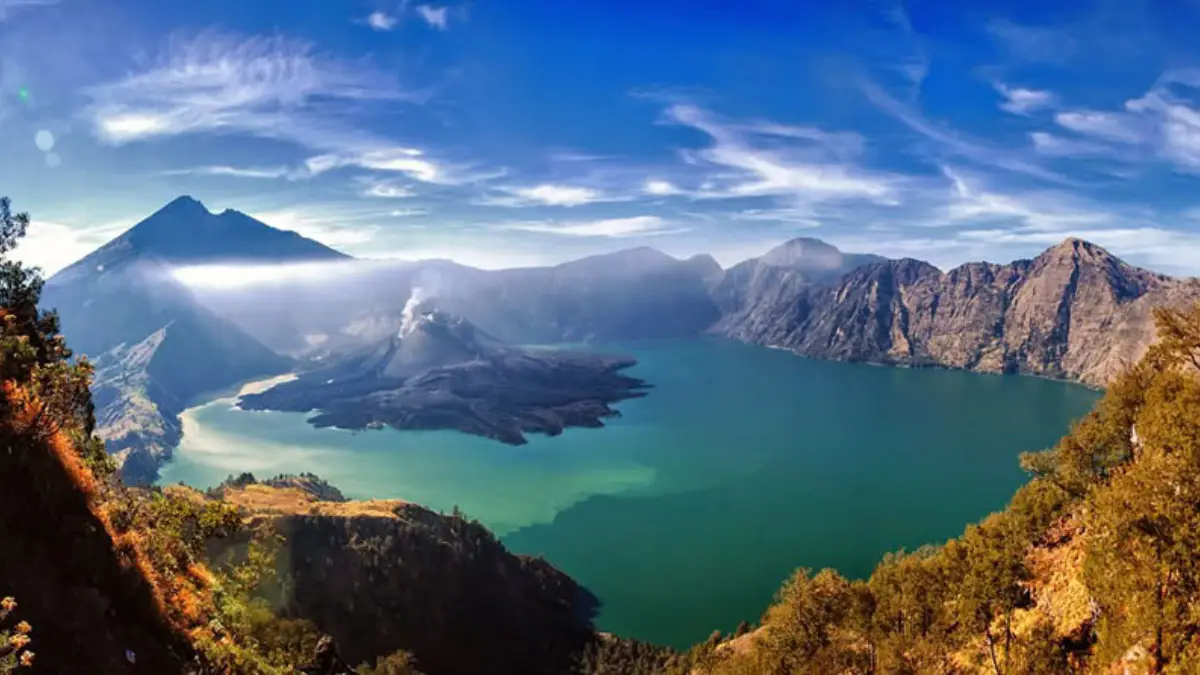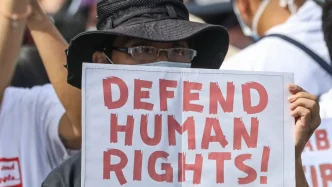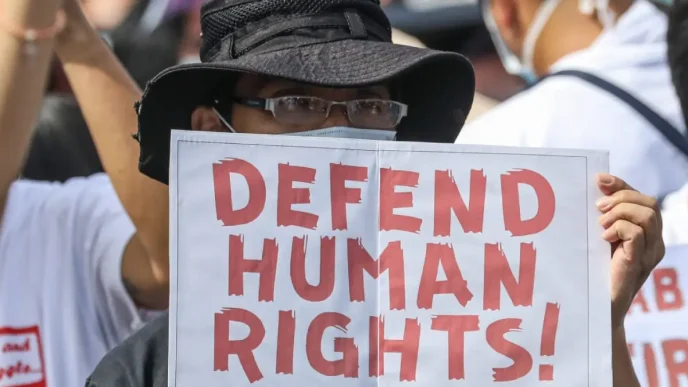Two tragic incidents on Mount Rinjani, Indonesia’s second-highest volcano located on Lombok Island in West Nusa Tenggara, have reignited urgent concerns about hiker safety and the adequacy of rescue operations on one of the country’s most popular trekking destinations. In late June 2025, Juliana De Souza Pereira Marins, a Brazilian national, lost her life after falling into a ravine near the summit. Just days later, a Malaysian tourist, Nazli, sustained injuries in a separate fall while descending the 3,726-meter peak. These accidents have spurred calls for stricter safety protocols and a comprehensive review of rescue management on the mountain.
A Deadly Fall and a Delayed Rescue
On June 21, 2025, Juliana Marins encountered disaster while trekking near Cemara Nunggal, a notoriously narrow trail section close to Mount Rinjani’s summit. Bordered by the crater on one side and steep cliffs on the other, the path poses significant risks to even experienced hikers. Marins fell into a 200-meter-deep ravine, yet initial reports suggested she survived the impact. Rescuers heard her cries for help, and drone footage captured on June 23 showed her sitting upright partway down the ravine, offering a glimmer of hope.
However, the rescue operation faced insurmountable challenges. Harsh weather conditions, including thick fog and heavy rain, combined with the treacherous terrain at an altitude of 2,700 meters, severely hampered efforts. It was not until the night of June 24 that rescuers finally reached her, only to find she had succumbed to her injuries or the elements. National Search and Rescue Agency head Air Vice Marshal Mohammad Syafi’i defended the team’s efforts, stating, “The victim’s location was extremely difficult to reach. Rescuers had to use specialized vertical rescue equipment and battled thick fog and heavy rain, which severely limited their visibility, to reach her,” as reported by local outlets on June 25, 2025.
Despite these explanations, Marins’ family and many Brazilian netizens expressed outrage over what they perceived as a slow and inadequate response. Criticism focused on the alleged lack of proper equipment and preparedness, with some suggesting that the delay in reaching Marins may have contributed to her death. Abd Haris Agam, a volunteer involved in the rescue, admitted to logistical shortcomings. “The rope the rescue teams brought wasn’t long enough to reach the victim, so I had to fetch a 600-meter rope from the West Nusa Tenggara Search and Rescue Agency office and carry it to the mountain summit. It was heavy and took a lot of time,” he explained in a statement on June 26, 2025. Agam urged authorities to establish emergency shelters near the summit to store evacuation equipment, enabling faster responses in future crises.
A Second Incident Heightens Alarm
Just days after Marins’ tragic death, another accident underscored the persistent dangers of Mount Rinjani. On June 27, 2025, Nazli, a 47-year-old Malaysian tourist, joined a group of 12 hikers ascending the mountain via the trail in Sajang village, Sembalun district. After reaching the summit, the group began their descent toward Segara Anak Lake. During this leg, Nazli slipped on a narrow trail while making way for porters—local workers who assist climbers by carrying supplies.
“He slipped while attempting to make way for several porters passing along the narrow trail,” said First Inspector Nicolas Oesman, a spokesperson for the East Lombok Police, in a statement to Antaranews on June 29, 2025. Nazli was carried down the mountain by fellow hikers, porters, and members of the local Rinjani rescue team. He received treatment at the Sembalun Community Health Center for bruising to his right leg, hip pain, and minor head scrapes. According to a social media update from the Mount Rinjani National Park Management Agency (BTNGR) on June 29, 2025, Nazli was in stable condition and physically fit to resume normal activities.
A Pattern of Tragedy on Rinjani
These incidents are not isolated. Between 2017 and 2024, nine hikers lost their lives on Mount Rinjani due to various causes, including exhaustion and accidental falls. Just last month, in May 2025, a 57-year-old Malaysian hiker, Rennie bin Abdul Ghani, died after falling from a cliff on the mountain. In October of the previous year, 16-year-old Kaifat Rafi Mubarok from Jakarta also perished in a similar accident. The recurring nature of such tragedies has amplified public and official concern over the safety of trekking on Rinjani, a destination that draws thousands of domestic and international visitors annually for its stunning vistas and challenging trails.
Official Response and Calls for Reform
The back-to-back incidents involving Marins and Nazli have prompted swift reactions from Indonesian authorities. The House of Representatives and the West Nusa Tenggara administration announced plans to review hiking procedures and search-and-rescue protocols on Mount Rinjani. This review will prioritize regulations concerning permit requirements for both domestic and international visitors, aiming to ensure that only adequately prepared individuals undertake the trek.
Tourism Minister Widiyanti Putri Wardhana emphasized the need for enhanced safety measures at extreme tourism destinations like Rinjani. “These incidents remind us that every extreme tourism destination carries serious risks,” she said in a press statement on June 29, 2025. Widiyanti called for stricter enforcement of safety procedures, urging tourism service providers to ensure that guides and porters are properly certified and trained. She also advocated for stronger coordination with local authorities and increased public awareness campaigns, particularly targeting foreign tourists, on the importance of adhering to safety protocols.
Balancing Tourism and Safety
Mount Rinjani is a cornerstone of Indonesia’s adventure tourism sector, contributing significantly to the local economy in Lombok and West Nusa Tenggara. The mountain’s allure lies in its rugged beauty, with panoramic views from the summit and the serene Segara Anak Lake nestled within its crater. However, the very features that make Rinjani a magnet for thrill-seekers—its steep trails, high altitude, and unpredictable weather—also render it a perilous endeavor for the unprepared.
The tourism industry faces a delicate balancing act: preserving access to such natural wonders while mitigating the inherent risks. Stricter regulations, such as mandatory pre-trek briefings, health screenings, or limits on hiker numbers during adverse weather, could reduce accidents but may also deter visitors or burden local operators. Additionally, equipping rescue teams with adequate resources—such as longer ropes, drones for rapid assessment, and weather-resistant gear—requires significant investment and coordination between national and regional authorities.
Global Context and Local Realities
For a global audience, the challenges on Mount Rinjani may evoke comparisons to other high-risk trekking destinations, such as Nepal’s Everest Base Camp or Peru’s Inca Trail, where safety protocols have evolved in response to past tragedies. Yet, Indonesia’s context is distinct, shaped by its vast archipelago, diverse climates, and varying levels of infrastructure across regions. In West Nusa Tenggara, logistical constraints and limited funding for rescue operations exacerbate the difficulties of managing emergencies on remote peaks like Rinjani.
The outcry from Marins’ family and international observers also highlights a broader issue: the expectations of foreign tourists versus the realities of local capacity. While criticism of the rescue efforts may be valid, it must be weighed against the genuine obstacles faced by teams operating in extreme conditions with limited resources. Bridging this gap—through international cooperation, training programs, or funding for equipment—could be a step toward aligning Indonesia’s adventure tourism with global safety standards.
The Road Ahead
As Indonesia grapples with the fallout from these recent incidents, the path forward for Mount Rinjani remains uncertain. Will the proposed reviews of hiking and rescue protocols translate into meaningful change, or will they falter amid bureaucratic delays and competing priorities? For now, the mountain stands as both a symbol of natural splendor and a somber reminder of nature’s unforgiving power. The hope is that lessons from these tragedies will spur reforms, ensuring that future adventurers can experience Rinjani’s majesty without paying the ultimate price.
















